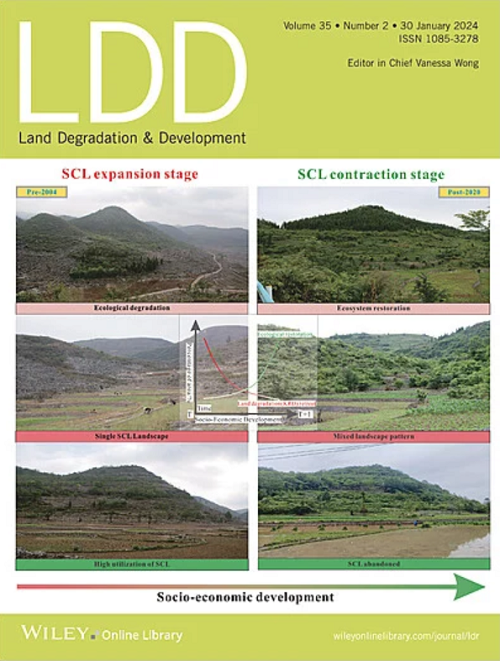Delineation of Fallow Priority Areas Under Food Security Constraints Using the MARXAN
IF 3.6
2区 农林科学
Q2 ENVIRONMENTAL SCIENCES
引用次数: 0
Abstract
Fallow is a crucial strategy for sustainable agricultural resource management and environmental conservation. Previous studies have mainly focused on the scale of fallow areas, but have rarely considered the connectivity and spatial prioritization of fallow areas during delineation, resulting in scattered and fragmented outcomes. To address these problems, this study proposes a method for fallow area delineation that considers food security constraints. The modified cropland pressure index and principal component analysis were used to estimate the optimal fallow scale for the 21 cities in Guangdong Province, China. Then, the MARXAN was employed to assess the fallow demand of each city in Guangdong, which enabled effective delineation of priority areas for fallow. Connectivity was a key consideration to ensure the contiguous management of fallow areas. The results indicated that fallow scale could be better estimated after considering food security constraints. The modified cropland pressure index revealed that 17 of the 21 cities were necessary for the implementation of fallow management, and the proportion of cropland eligible for fallow was 2.12%. The delineation of fallow areas was influenced by several factors, including the limited availability of high‐quality cropland, low production capacity, poor crop growth, excessive groundwater extraction, and imbalance between food supply and demand. An evaluation of these factors provided a quantitative basis for prioritizing fallow areas. It is imperative to implement fallow in the identified priority areas of Shantou, Huizhou, Jiangmen, Zhanjiang, and Maoming. Specifically, a total of 20 counties were identified as needing priority implementation of fallow, including the fallow area I of 2.45 × 10利用MARXAN划分粮食安全约束下的休耕优先区
休耕是可持续农业资源管理和环境保护的重要战略。以往的研究主要集中在休耕区的尺度上,但在休耕区的划分中很少考虑休耕区的连通性和空间优先级,导致研究结果的分散和碎片化。为了解决这些问题,本研究提出了一种考虑粮食安全约束的休耕区划定方法。采用改良耕地压力指数和主成分分析方法,对广东省21个地市的最优休耕规模进行了估算。然后,利用MARXAN对广东省各城市的休耕需求进行评估,有效划分出休耕优先区域。连通性是确保休耕区连续管理的关键考虑因素。结果表明,在考虑粮食安全约束条件后,休耕规模可以得到较好的估计。修正后的耕地压力指数显示,21个城市中有17个城市有必要实施休耕管理,符合休耕条件的耕地比例为2.12%。休耕区域的划分受到多种因素的影响,包括优质耕地有限、生产能力低、作物生长不良、地下水开采过度以及粮食供需失衡。对这些因素的评价为确定休耕地区的优先次序提供了定量依据。在汕头、惠州、江门、湛江、茂名等已确定的重点地区实施休耕势在必行。具体而言,共有20个县被确定为需要优先实施休耕的县,其中休耕区I为2.45 × 104 hm2,休耕区II为1.33 × 104 hm2。该研究对平衡农业生产与环境保护的关系具有重要意义,并为制定农业和环境管理战略提供了方法支持。
本文章由计算机程序翻译,如有差异,请以英文原文为准。
求助全文
约1分钟内获得全文
求助全文
来源期刊

Land Degradation & Development
农林科学-环境科学
CiteScore
7.70
自引率
8.50%
发文量
379
审稿时长
5.5 months
期刊介绍:
Land Degradation & Development is an international journal which seeks to promote rational study of the recognition, monitoring, control and rehabilitation of degradation in terrestrial environments. The journal focuses on:
- what land degradation is;
- what causes land degradation;
- the impacts of land degradation
- the scale of land degradation;
- the history, current status or future trends of land degradation;
- avoidance, mitigation and control of land degradation;
- remedial actions to rehabilitate or restore degraded land;
- sustainable land management.
 求助内容:
求助内容: 应助结果提醒方式:
应助结果提醒方式:


